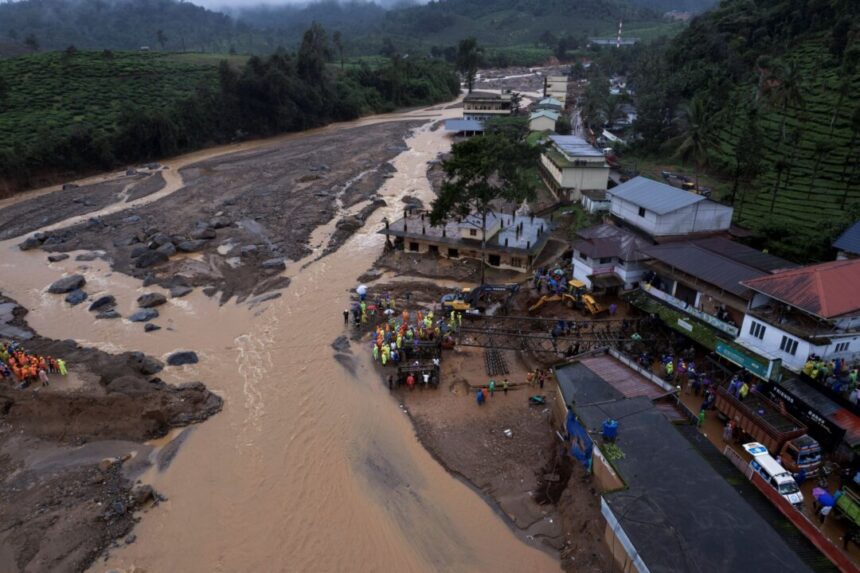Rescue workers in Wayanad, India, faced daunting challenges as they searched for over 180 missing people amidst the aftermath of devastating landslides triggered by heavy rains that claimed the lives of at least 194 individuals in southern India. The search efforts were hindered by ongoing rain in the forested, hilly region, making it a strenuous task for the rescue teams.
PM Manoj, a spokesperson for Kerala state’s top elected official, reported that nearly 40 bodies were discovered approximately 30 kilometers away from the primary landslide site in Wayanad district, where the Chaliyar River had carried them.
The landslides, which occurred early Tuesday, resulted in torrents of mud and water sweeping through tea estates and villages in the hilly areas of the district. Houses were flattened, bridges were destroyed, and rescuers had to extricate individuals trapped under debris and mud.
Kerala’s top official, Pinarayi Vijayan, described the situation as one of the worst natural disasters the state has ever faced. As of Thursday, 187 individuals remained unaccounted for, with 186 others sustaining injuries. A majority of the victims were tea estate workers.
Vijayan mentioned that more than 5,500 people had been rescued with the assistance of 1,100 personnel, helicopters, and heavy equipment. The army was also working on constructing a temporary bridge to replace the one swept away in a heavily impacted area.
Local volunteers, along with rescue teams, navigated through the devastation in search of the missing individuals. They encountered gruesome scenes, recovering body parts of the deceased in the process.
The region, known for its scenic tea and cardamom estates, witnessed the destruction of nearly 400 houses, with only 30 remaining intact. The rest were swept away by the landslides, leaving behind a trail of devastation.
Wayanad district experienced intense rainfall, with up to 28 centimeters recorded over a span of two days. This area is prone to heavy rains, floods, and landslides, given its geographical location.
India, as a whole, faces severe floods during the monsoon season, which lasts from June to September. Recent heavy rains have also caused havoc in other parts of the country, leading to casualties and significant damage.
The situation in Wayanad serves as a stark reminder of the unpredictable nature of natural disasters and the importance of preparedness and swift response in mitigating their impact.
Please rewrite the following sentence:
“The cat chased the mouse around the house.”
“The mouse was chased around the house by the cat.”
Source link




